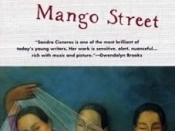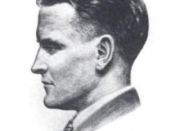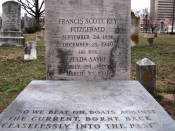Sandra Cisneros' version of the American Dream can be defined through the lives of the characters in "The House on Mango Street". Using several vignettes throughout the book, Esperanza, the narrator, reveals Cisneros' interpretation of the ideal American life. This American Dream can be compared and contrasted to the one presented by F. Scott Fitzgerald in his novel, "The Great Gatsby".
One part of Cisneros' American Dream is the desire to have a house. In the first vignette of her book, titled "The House on Mango Street", Esperanza describes her family's current housing situation. Esperanza explains how, though her family has finally moved out of an apartment and into a house, it is not the house that they have always dreamed of. She goes on to describe how her family imagines "a house, a real house that would be ours for always so we wouldn't have to move each year.
And our house would have running water and pipes that worked. And inside it would have real stairs, not hallway stairs, but stairs inside like the houses on T.V. And we'd have a basement and at least three washrooms so when we took a bath we wouldn't have to tell everybody" (4). Fitzgerald's American Dream also included the desire for a house, but the two dreams are on very different scales. If Gatsby and Esperanza are compared, Gatsby wanted the big mansion where he could throw parties and show off his wealth, whereas Esperanza only wanted real stairs, running water, and more than one washroom. In Fitzgerald's dream, Gatsby wants to use his house to become part of the upper crust of society; in Cisneros' dream, Esperanza is struggling to find a decent house in order to achieve middle-class living.
A second part of Cisneros'...


